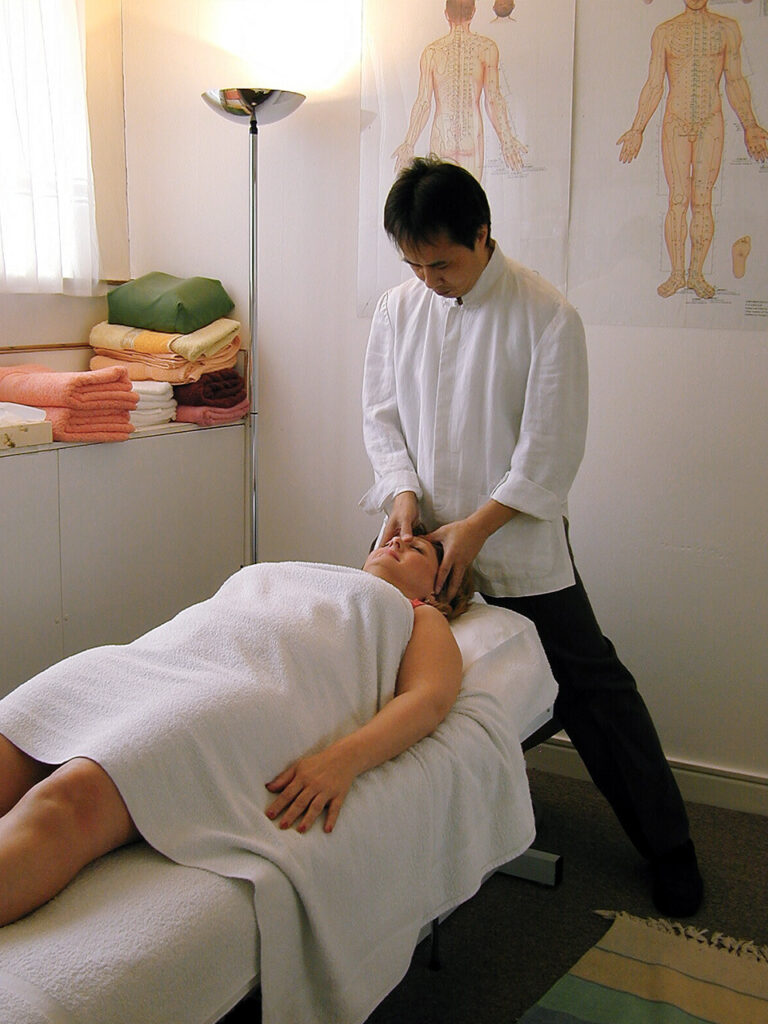Basic Principles
Tui-Na combines digital pressure, clinical massage and manipulation of the body and energy points to eliminate pains and aches, promote the harmonious flow of energy and encourage natural healing.
Direct contact with the skin is essential for the Tui-Na physician to detect what is underneath the skin, to determine the condition of the body, its temperature, tenderness, changes in colour; to test blood and Qi flow or obstruction; and to promote and transfer energy to the patient. No oils are used during treatment.
There are circumstances in which Tui-Na is carried out with the patient fully clothed. Such practise includes working in the street or in the workplace, which is very common in China. This kind of Tui-Na offers temporary relaxation and is not designed to treat any serious or specific problems as in a clinical setting. This is an increasingly popular form of Tui-Na being taught and practised in the West. The knowledge needed to practise this form is minimal and training less rigorous.
Whether practising inside or outside of the clinic, Tui-Na not always advise treating pain with more pain. The common saying “no pain, no gain” is not a principle of Tui-Na. Pain is the body’s warning signal, not a method of treatment. Sometimes causing more pain may create new problems and prolong the healing process. The feeling of stress and tension on the pressure points is regarded as energy stimulation, not pain. The method of treatment will be determined by how the condition was created and how it manifests itself.

